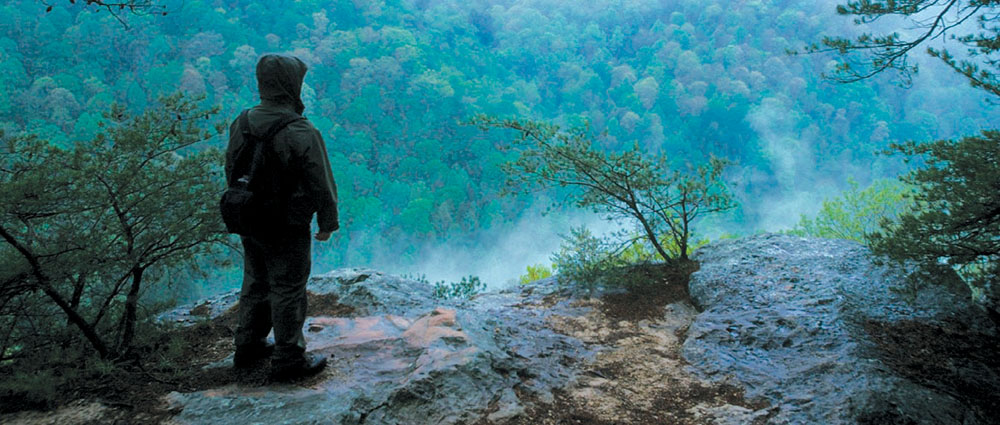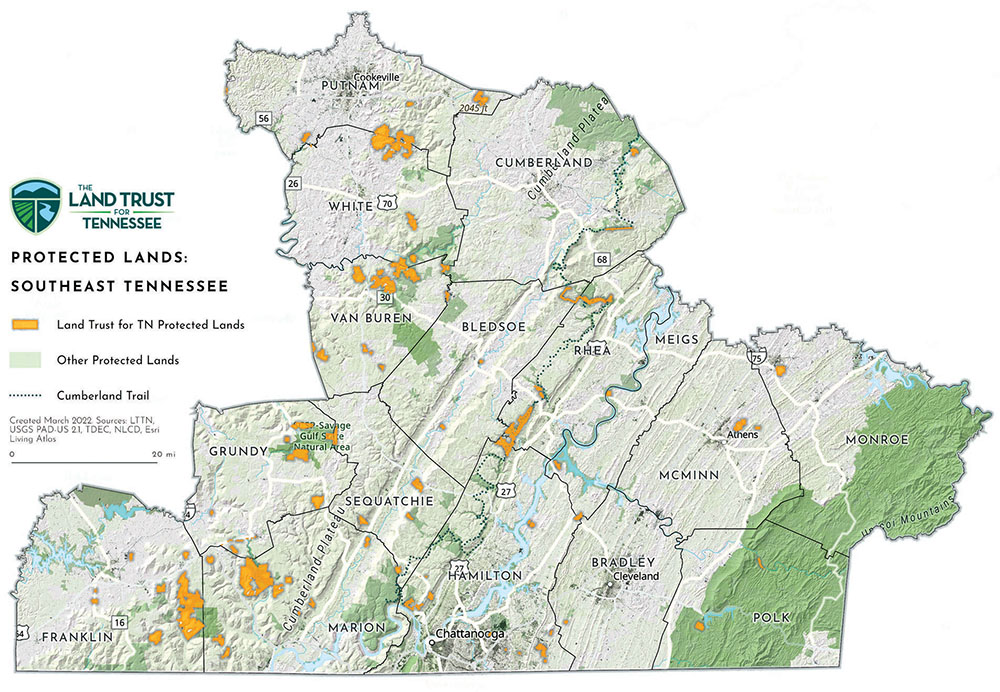In Tennessee, you don't have to go far to see rolling farmland, find a historic site or enjoy one of the countless trails and natural areas. In Chattanooga especially, there are plenty of reasons to get outside and explore. Within thirty minutes of downtown, you'll find more than 50 trailheads, making it one of the most hiker-friendly cities in the country.
No matter where you live or visit in the state, Tennessee has a lot to offer. It's a unique bounty that we can all enjoy -- but it requires vigilance and a continued investment if we want it to exist for future generations.
That's where The Land Trust for Tennessee comes in. From the Mississippi River to Lookout Mountain, The Land Trust works to conserve places across the state that we can't afford to lose. We need open spaces that allow wildlife to thrive and public parks for people from all walks of life to enjoy. From farms and forests, to places important to the history of Tennessee, land is needed today and essential for tomorrow.
In Southeast Tennessee, partnerships have been critical to successful conservation efforts. Collaboration between local governments, nonprofits, state agencies and community groups brings public land conservation projects to fruition.
"When we work with The Land Trust, it's not a one-size-fits-all situation," explained Jim Bryson, speaking as deputy commissioner of Tennessee State Parks last year. "[The Land Trust] solves puzzles on very short timelines in ways that government simply can't do. They are able to build relationships with landowners that make meaningful and lasting things happen for public access to open spaces all across Tennessee."
The Land Trust for Tennessee has worked with the Tennessee Division of State Parks and Natural Areas to add over 18,000 acres to 17 of the state's most beloved sites. In 2008, the first joint project protected 1,165 incredible acres: portions of the Fiery Gizzard Trail and surrounding viewsheds. One of the state's most iconic hiking trails, Fiery Gizzard, spans portions of Grundy and Marion counties atop the Cumberland Plateau. The trail and surrounding area are considered one of the most intact, biologically diverse, natural landscapes remaining in the Eastern United States. Thousands of visitors flock to the 13-mile trail every month to experience the unique sandstone features, flowing waterfalls and breathtaking panoramic vistas.
The trail and natural features of the Fiery Gizzard area have not always been protected from threat. Even though the primary trailhead is within South Cumberland State Park, the trail passes through multiple private properties on its path to Foster Falls Recreation Area.
In 2010, The Land Trust for Tennessee and The Conservation Fund protected 6,100 acres of additional land around Fiery Gizzard. Of those acres, 2,900 were transferred to the state as an addition to South Cumberland State Park and the Fiery Gizzard Trail system. The remaining acreage was protected through a conservation easement with a group of private landowners who manage the land for wildlife habitat and recreation.
In April 2017, The Land Trust and The Conservation Fund, in partnership with the Tennessee Department of Environment and Conservation and the Open Space Institute, announced the addition of 1,058 acres to South Cumberland State Park in Marion County adjacent to the Fiery Gizzard Trail.
Through thoughtful collaboration, the natural habitat and views from the Fiery Gizzard Trail have been protected, and key portions have been re-routed onto state park land. This kind of work is only possible when motivated partners share a vision for the future of Tennessee.
"There's so much worth conserving in Southeast Tennessee," said Land Trust Vice President Emily Parish. "Thanks to landowners who were inspired by their neighbors, The Land Trust now protects over 103 properties in Southeast Tennessee totaling over 51,820 acres."
Local landowners like Geoff Post understand that the time to act is now. "We need to protect these places. We need the outdoors more than we ever have," he says.
To get involved, visit landtrusttn.org and find out how you can be a part of the collaborative effort to conserve the character of Tennessee.


